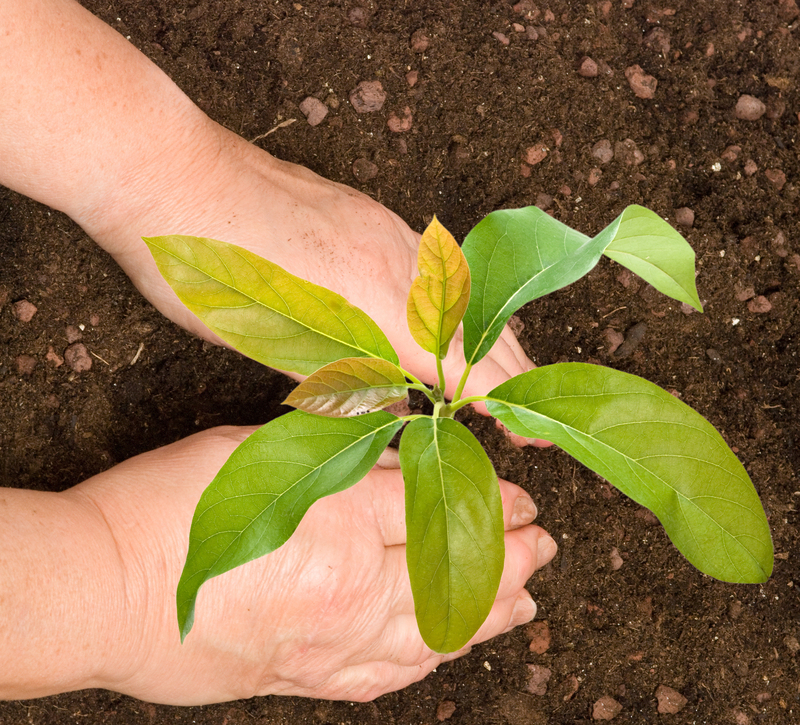Top DIY Ways to Clear Out a Tree Stump Without Heavy Machinery
Tree stumps left behind after felling a tree can be unsightly, hazardous, and can even hamper your landscaping plans. While bringing in professional stump grinders or other heavy machinery is the quickest option, it is also costly and not always practical for homeowners. Fortunately, there are several effective DIY methods to remove a tree stump that don't require machinery. This comprehensive guide will introduce you to the top ways to get rid of a tree stump on your own, saving you money and giving your yard a fresh start.
Why Remove a Tree Stump?
Before diving into tree stump removal methods, understanding the reasons for eliminating a stump is essential:
- Safety Concerns: Stumps can be tripping hazards for children and adults.
- Pest Prevention: Decaying wood attracts termites, ants, beetles, and other pests.
- Landscaping Ease: Stumps interfere with mowing, gardening, and planting plans.
- Aesthetic Value: Stumps can make an otherwise beautiful yard look untidy.
Removing a stump not only enhances your yard's appearance but also prevents numerous future issues.

Planning Your DIY Stump Removal
Every stump is unique; the best method to clear it out without heavy tools depends on the tree species, stump size, and how long ago the tree was cut. Before you begin:
- Estimate the stump size--wider and older stumps may take longer to remove.
- Check for local regulations and get utility lines marked to prevent accidents.
- Assemble necessary safety gear: gloves, safety goggles, boots, and a shovel.
Chemical Tree Stump Removal: The Fastest DIY Option
Using Stump Removal Chemicals
For those seeking a less labor-intensive route, using chemical stump removers is a highly effective way to decompose the wood. This method works best on older, dry stumps but can also accelerate the decay of fresher ones.
How to Apply Chemical Stump Remover:- Drill Holes: Use a large drill bit (minimum 1/2 inch wide) to make several deep holes into the top and sides of the stump, at least 8-12 inches deep.
- Apply Chemicals: Pour a commercial stump remover or potassium nitrate into the holes following the manufacturer's instructions.
- Add Water: Fill each hole with water to dissolve the chemicals and hasten absorption.
- Wait: Over several weeks to months, the wood will soften and begin to rot, making it easy to break apart using an axe or shovel.
Pros: Minimal physical effort, affordable, and easy to do.
Cons: Takes weeks or months for full decomposition, chemicals could pose an environmental risk if overused.
Homemade Chemical Methods
- Salt Epsom Method: Fill holes with Epsom salt, add water, and cover the stump. Epsom salt draws moisture out, speeding up decomposition.
- Rock Salt Technique: Similar to Epsom salt, common rock salt can be used, but avoid excessive salting that can damage surrounding plants.
Tip: Always read and follow safety guidelines when handling chemicals!
Burning Out a Tree Stump
Another popular DIY tree stump removal strategy is using fire to burn the stump. This approach requires caution, and may not be permitted in all areas, so always check local fire codes first.
How to Burn a Tree Stump:- Prepare the Stump: Drill deep holes into the stump to allow air and fuel to penetrate.
- Add Fuel: Fill holes with kerosene or fuel oil (never gasoline), letting it soak for several days.
- Burn: Ignite the stump, keeping a close watch on the fire, and control the area using metal screens if possible.
- Monitor and Extinguish: Let the stump burn down, and douse thoroughly once only embers remain.
Pros: Faster than chemical decay, affordable, and effective for dry stumps.
Cons: Fire risk, affected by local laws, only suitable for certain stump locations.
Manual Digging and Chopping: A True DIY Approach
Manual removal is the most labor-intensive method but offers the satisfaction of a job well done. It's best for smaller stumps and those with shallow, accessible root systems.
Steps to Remove a Stump by Digging
- Expose the Roots: Using a shovel, dig around the base of the stump to uncover and clear the large roots.
- Cut Roots: Use a mattock, hand saw, axe, or pruning saw to sever the roots as you uncover them.
- Loosen the Stump: Rock the stump back and forth to break it free. Leverage can be increased by inserting a long steel rod under the stump as a lever.
- Remove Remaining Pieces: Once loose, lift the stump out, then fill the hole with soil or mulch.
- Tip: Watering the area several days beforehand softens the soil, making root cutting easier.
Pros: No chemicals required, immediate results, environmentally safe.
Cons: Physically demanding, may take several hours to complete, difficult for large or deeply rooted stumps.
Naturally Rotting the Stump
If you're not in a hurry, you can let Mother Nature do the hard work. Encouraging natural decay is eco-friendly, cost-free, and requires very little effort. Here's how to speed up the process:
- Keep It Moist: Regularly water the stump to create a hospitable environment for fungi and bacteria.
- Add Nitrogen: Spread fertilizer (rich in nitrogen) around and on the stump to jumpstart decomposition by microbes.
- Cover Up: Place a tarp or compost pile over the stump to seal in moisture and warmth, both of which accelerate decay.
- Drill Holes: Just like with chemicals, holes allow moisture and organisms to get inside the wood, breaking it down faster.
- Plant Mushrooms: Some gardeners "inoculate" stumps with edible mushroom spores, knocking out two birds with one stone!
Pros: Safe, sustainable, improves soil health.
Cons: Slowest method available (may take years), stump remains unsightly in the meantime.
Alternative and Creative DIY Stump Uses
Why not give your tree stump a new lease on life while it decomposes, or as an alternative to total removal? Consider these creative ideas:
- Planter: Hollow out the center and fill it with soil for a rustic flowerpot.
- Fairy Garden: Create a whimsical miniature garden on top or around the stump.
- Yard Art: Sculpt or paint the stump, turning a problem into a feature.
- Table or Seat: Smooth and seal the top for a natural outdoor table or chair.
By turning an obstacle into an asset, you recycle the tree's remains and add character to your outdoor space.
Common Mistakes to Avoid
To ensure safe and effective DIY stump removal without heavy equipment, take care to avoid these frequent pitfalls:
- Not Wearing Safety Gear: Always protect your eyes, hands, and feet--especially when swinging an axe or saw.
- Underestimating Root Structure: Some species, like oak, have far-reaching roots. Be patient and thorough.
- Improper Chemical Use: Never exceed recommended dosages, and avoid runoff onto lawns or gardens.
- Neglecting Local Laws: Open burning and chemical treatments may be restricted in your area; always check regulations first.
FAQs on Removing a Tree Stump Without Heavy Machinery
How long does it take for a stump to decompose naturally?
With the right conditions (moisture, warmth, and nitrogen), a stump can take three to seven years to completely rot. Using DIY decay accelerants can trim years off this process.
Can I use a car or truck to pull out a stump?
While tempting, this is generally unsafe and not recommended for homeowners. Straps can break, and vehicles can be damaged. Manual methods or chemical treatments are far safer DIY alternatives.
What if new shoots grow from the stump?
Sprouting occurs when a stump is still living. Cut off new shoots as they appear and treat the cut area with a stump killer or salt to prevent regrowth.
Should I be concerned about termites or insects if I leave the stump?
Yes; decaying wood quickly attracts pests. If you opt for natural decay, check the stump regularly, and never leave it untreated near wooden fences or structures.

The Best DIY Method for Your Stump
The best way to clear out a tree stump without heavy machinery depends on your time, budget, and stamina:
- Physical Digging: Great for small stumps and those who want immediate results.
- Chemical Decay: Best for those who prefer a hands-off, low-effort solution.
- Burning: A fast and effective method, but requires utmost safety and permission.
- Natural Decay: Ideal for the eco-conscious, patient homeowner.
Combining methods, such as starting with chemical treatment followed by chopping, can speed up the process even further. Always factor in your schedule, local regulations, and future landscaping plans.
Conclusion: Achieving a Stump-Free Yard--DIY Style!
You don't need expensive equipment to reclaim your landscape from unsightly stumps. With a variety of DIY tree stump removal techniques--from manual digging, safe burning, and chemical accelerants to promoting natural decay--you're equipped to tackle the challenge. Remember to plan ahead, use proper safety measures, and think creatively about repurposing stumps if removal isn't your first choice.
Whether you want fast results or a sustainable approach, these home solutions for tree stump removal will help restore beauty and usefulness to your yard. Armed with information and determination, your tree stump can soon be just a memory!
Keywords: tree stump removal without heavy machinery, DIY stump clearing, best ways to get rid of a tree stump, manual stump removal, chemical stump rotting, natural stump decay, burn tree stump safely, how to clear a tree stump by hand, stump removal options for homeowners.